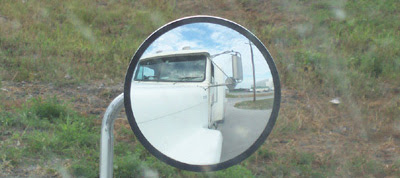
 Bruce Goff isn’t a household name in architecture, but in his heyday he was a prolific and creative designer of many impressive art deco projects. Art Deco was purely decorative style, seen as elegant, functional, and ultra modern as well. Early in his career, Goff designed the Boston Ave. Church in Tulsa, which is considered the first church designed in a strictly American style of architecture.
Bruce Goff isn’t a household name in architecture, but in his heyday he was a prolific and creative designer of many impressive art deco projects. Art Deco was purely decorative style, seen as elegant, functional, and ultra modern as well. Early in his career, Goff designed the Boston Ave. Church in Tulsa, which is considered the first church designed in a strictly American style of architecture. What is interesting about this church is the ongoing dispute over who actually designed it. From what I understand, Goff had an art instructor that developed the motif for the church. The soaring straight lines of the 200 ft. tower represent outreached arms raised up to heaven. Goff developed these sketches into the designs for the church. There is also some dispute from the firm where Goff was working at the time, who claim that
What is interesting about this church is the ongoing dispute over who actually designed it. From what I understand, Goff had an art instructor that developed the motif for the church. The soaring straight lines of the 200 ft. tower represent outreached arms raised up to heaven. Goff developed these sketches into the designs for the church. There is also some dispute from the firm where Goff was working at the time, who claim that  other members of the firm also contributed to the project.
other members of the firm also contributed to the project.The sculptures that adorn the entrances to the church were designed by sculptor, Robert Garrison. While visiting the church, staff members pointed out to me that the church credits Goff’s instructor, Adah Robinson, with the design of this building.
Inside the tower serves as an entrance into the 1,800 seat auditorium on the right. Sunlight enters through the ceiling and through the eleven tall exterior windows behind audience seating. Goff considered geometrical shapes and found materials (common
 archi-speak) as his motivation in design. Visiting the Boston Ave. Church the complex detail and grand scale of the church were very awe-inspiring.
archi-speak) as his motivation in design. Visiting the Boston Ave. Church the complex detail and grand scale of the church were very awe-inspiring.


 The second semester of studio required that we expand on our Big Idea diagrams and models from Studio 01. The program called for a Jazz Club to be located in downtown Denver. We experimented with iterations of the forms we developed in the first semester. From there we worked on sketches, floor plans, elevations and models of the
The second semester of studio required that we expand on our Big Idea diagrams and models from Studio 01. The program called for a Jazz Club to be located in downtown Denver. We experimented with iterations of the forms we developed in the first semester. From there we worked on sketches, floor plans, elevations and models of the 




























 First off is the addition to the Denver Art Museum, which opened last year to a lot of media attention. The building has sparked a lot of debate because of it's role in the "Bilbao effect" in architecture. A recent movement in architecture that began with Frank Gehry's Guggenheim Museum in Bilbao, Spain. The building itself has overshadowed the collection of art contained within but the mass exposure the building has received has significantly increased tourism in a city that was struggling.
First off is the addition to the Denver Art Museum, which opened last year to a lot of media attention. The building has sparked a lot of debate because of it's role in the "Bilbao effect" in architecture. A recent movement in architecture that began with Frank Gehry's Guggenheim Museum in Bilbao, Spain. The building itself has overshadowed the collection of art contained within but the mass exposure the building has received has significantly increased tourism in a city that was struggling.



